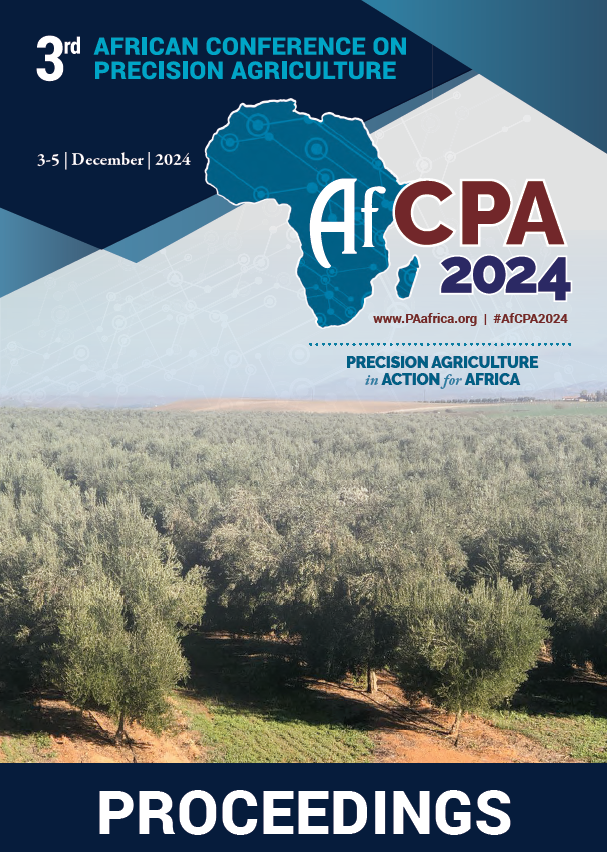Download the Conference Proceedings
Proceedings
Authors
| Filter results5 paper(s) found. |
|---|
1. Delineation of site-specific management zones based on soil apparent electrical conductivity (ECa) measurement combining traditional soil sampling methodSite-specific management requires the identification of treatment areas based on homogeneous characteristics. The designation of subfield regions is challenging because of complex correlations appearing in spatial variability of soil properties and nutrient concentrations. The research was conducted on two neighbouring fields (48 ha and 15 ha) in Fejér county, Hungary. Soil ECa mapping was carried out on 22 October, 2019 and soil samples were taken on 15 November, 2019.... I.M. Kulmany, V. Vona, M. Vona, L. Szekeres, L. Bede, G. Milics, B. Kovacs |
2. CropSAT – opportunities for applications in precision agriculture in AfricaThe present paper aims at describing the CropSAT system, a Sentinel-2-based interactive decision support system (DSS) that provides vegetation index (VI) maps free-of-charge all across the globe for different applications in precision agriculture. We summarize research results from the ongoing developmental process and pointing to opportunities for development and application in precision agriculture in Africa. The DSS was initially developed in a research project at the Swedish University of... O. Alshihabi, I. Nouiri, M. Mechri, H. Angar, K. Piikki, J. Martinsson, M. Söderström |
3. Some essential nutrients, active limestone and pH status of north and center Tunisian soils.Tunisia is a North African country characterized by a Mediterranean climate in the north and Saharan climate in the south part of the country, which resulted in a high geo-morphological diversity of its soils. The last are known by their various fertility status that is affected by abiotic constrains such as salinity, drought, erosion and low organic matter concentration. Thereby, soil fertility is largely linked to geographical position, making fertilization recommendation... A. Hachana, I. Hemissi, I. Achour, A. Souissi, B. Sifi |
4. Monitoring irrigation water use at large scale irrigated areas using remote sensing in water scarce environmentIncreasing pressure on available water resources in semi-arid region will affect the availability of water for irrigated agriculture. In this context, adoption of innovative and cost-effective tools for water management and analysis of water use patterns in irrigated areas is required for an efficient and sustainable use of water resources. This study aims to evaluate a remote sensing-based approach which allows estimation of the temporal and spatial distribution of crop evapotranspiration... M. Kharrou, V. Simonneaux, M. Le page, S. Er-raki, G. Boulet, J. Ezzahar, S. Khabba, A. Chehbouni |
5. Assessment of Nitrogen Fertilization in Tunisian Wheat Production Using Proximal and Remote SensingThe cereal sector in Tunisia covers wide areas in the country from sub-humid to semi-arid zones; most of the fields are rainfed. The sector is suffering from climate change impacts in term of rainfall amount and pattern. Water management policy in the country prioritizes allocating surface water to domestic uses than irrigation. On the other hand irrigation using groundwater (e.g. in Kairouan) continue to over use the water table with an average drawdown of 5 m/year. Because of this, low efficiency... M. Mechri, O. Alshihabi, H. Angar, I. Nouiri, M. Landolsi, M. Söderström, K. Persson, S. Phillips |
